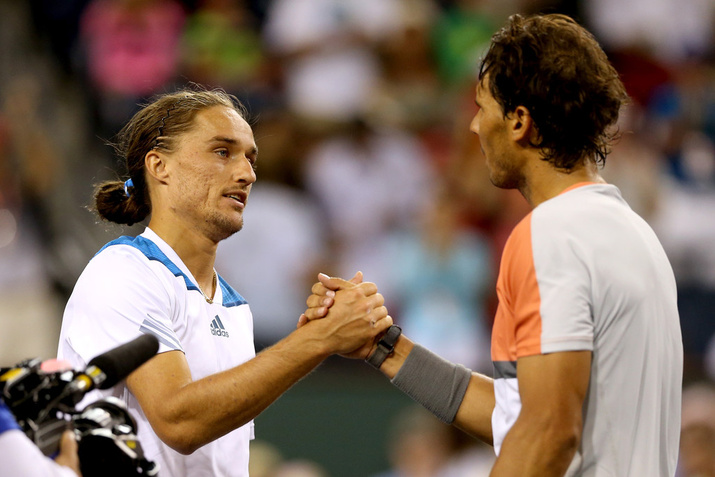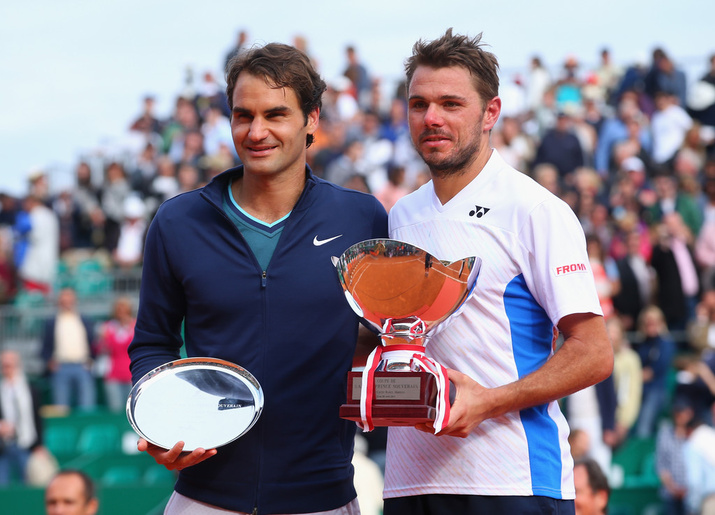Don't miss any stories → Follow Tennis View
Follow2014 Plot Twists Extend from Hard Courts to Clay
One of the more intriguing plotlines of 2014 has been the alleged shift in which the once rock-solid favorites no longer look so rock-solid. The rest of the field appears to be catching up little by little. This notion of a shift is not something that can be measured in terms that are black and white. Rather, it is more of a feeling, and it is a feeling that is gaining traction.
On the ATP World Tour, the catalyst for this sense of change starts and ends with Stanislas Wawrinka. His title at the Australian Open has inspired hope in many of his fellow competitors that someone outside the Big Four (Rafael Nadal, Novak Djokovic, Roger Federer, Andy Murray) is capable of winning the top prizes in the sport. Already the fruits of this new inspiration have been seen in Alexandr Dolgopolov’s upset of Nadal at Indian Wells, Milos Raonic’s victory over Murray there, and Kei Nishikori again getting the better of Federer in Miami.

Even when a member of the Big Four does walk away with a title, he is made to work more for it than in years past. Fewer score lines are lopsided, signaling that the rest of the field is beginning to close the gap.
To a lesser extent, the WTA has seen a similar trend. Dominika Cibulkova seemingly came out of nowhere to reach the Australian Open final, while Simona Halep has continued to build upon her breakout 2013 season and currently resides at No. 5 in the rankings. Furthermore, Serbs Ana Ivanovic and Jelena Jankovic, as well as Italian Flavia Pennetta have all enjoyed a resurgence of late, with Pennetta claiming the women’s title at Indian Wells.
These examples are just a small sampling of what has occurred over the course of the first quarter of the year. While such outcomes might be explained away by rust and nerves in the opening weeks of the season, fans expect things to return to normal at the Australian Open or by the marquee events in March. But the surprises have continued through the opening three months, causing speculation as to whether or not this is a trend that will continue.
Early in the clay season, it would appear that this trend may not end any time soon. Novak Djokovic was forced into the third set against Guillermo Garcia-Lopez in Monte Carlo. Maria Sharapova had to recover in the nick of time to avoid an opening loss in Stuttgart after squandering a 5-1 lead against Lucie Safarova in the third set.
And not everyone was as fortunate as Djokovic and Sharapova in surviving those upset bids. A number of seeds tumbled out in Charleston, including Serena Williams, who lost her opening match to the 78th-ranked Jana Cepelova. But the biggest shocker came in Monte Carlo, where Nadal was upset in the quarterfinals by countryman David Ferrer. This compatriot had not defeated Nadal on clay in a decade. Perhaps it was only a little less surprising that it was Wawrinka—not Federer or Djokovic—who took advantage of Nadal’s absence by claiming his first Masters 1000 title.

But tight matches and early losses by the traditional favorites do not necessarily undermine their prospects in Paris. It is still early in the clay season, and there are many other prestigious events yet to be contested. Still, many in the field are starting to bring their A-games, and that does not look likely to change in the near future. That is because more players are finding that one ingredient essential for success: belief.
Once the seed of belief is planted, it spreads. Wawrinka, Tomas Berdych, and John Isner, to name but a few, have all commented on the growing sense of a shift in the men’s game and the growing opportunities for players outside of the Big Four. That belief is important, because in order to dislodge the current establishment, you have to believe that you can. Each time a top-ranked player is pushed or an upset occurs, that belief grows in underdogs just a little more.
With that in mind, a few more surprises may loom before or even in Paris. High seeds on both Tours probably still will claim the trophies from the year’s second major. For the first time in a long time, however, this year’s Roland Garros feels more like a truly French “Open.”










